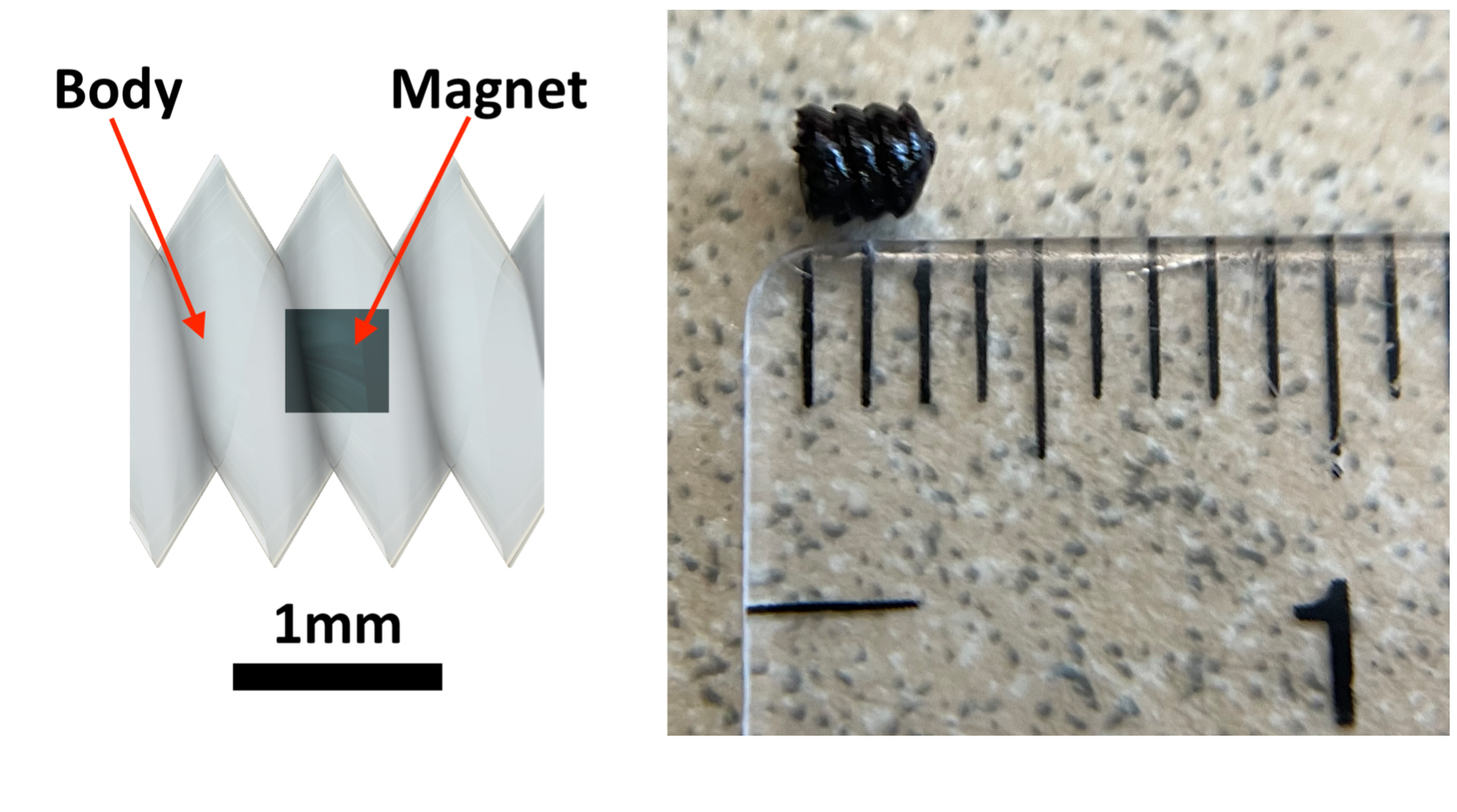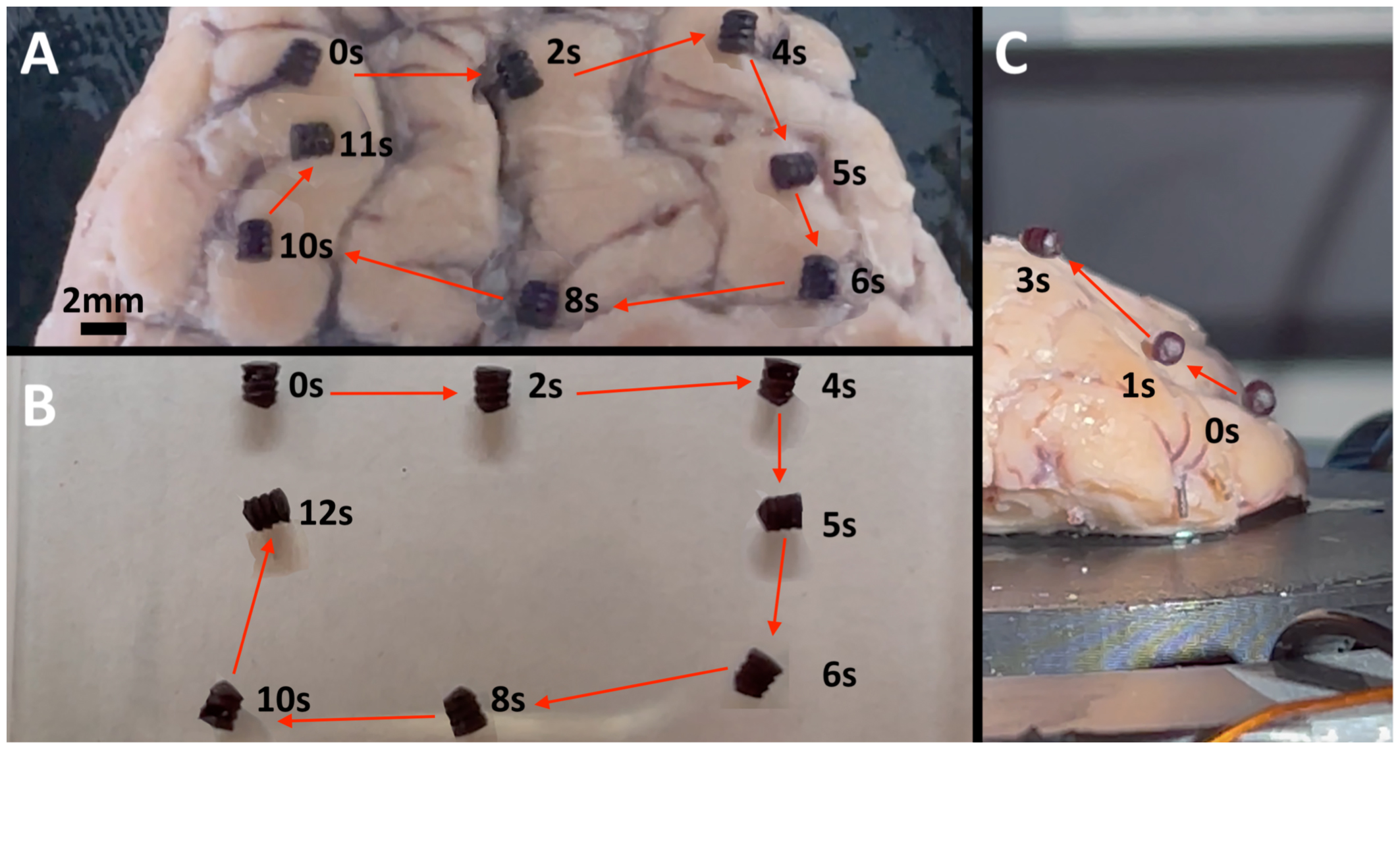These magnetically actuated nanoscale robots are minimally invasive and have the potential to perform local microsurgeries, targeted drug delivery, and biopsies. Developed at Georgia Tech, the microrobots easily travel over the uneven brain surface and within fluid-filled ventricles in controlled, non-linear trajectories using different motion modalities both individually and in swarms.
Current robotic technology used in neurosurgical procedures often uses macroscale instruments that are limited to linear trajectories and large craniotomies (removal of portions of the skull) to access tumors throughout the brain. As a result, they are highly invasive and risk damage to surrounding healthy brain tissue.
With improved mobility, precision, and control because of the magnetic permeability of tissue, these untethered, steerable devices have the potential to reach regions of the brain that current large clinical robotic devices cannot. Georgia Tech’s magnetically actuated microrobots could be a paradigm shift for soft tissue microsurgical and oncologic applications.
- Minimally invasive: Significantly reduces invasiveness of procedures in comparison to current macroscale, neurosurgical robots
- Precise control: Uses 3D position data of the microrobots on the brain surface in a closed-loop system to adjust the magnetic field parameters (i.e., magnitude, frequency, phase, and direct current [DC] offset of each coil) as well as the forces the robots exert to the biopsy tissue
- Facilitates movement: Employs microfabricated shapes that dictate the microrobot's movements, limits their contact with the brain surface to reduce adhesion, and may also provide a means for the robot to propel itself in fluid
- Simplifies surgeries: Distinguishes groups of microrobots within a heterogeneous swarm in real time without requiring precise placement of robots at the beginning of a procedure, which greatly simplifies the operation
- Neurosurgery for brain tumors, including biopsy of the human brain, targeted drug delivery, and eventually surgical intervention
- Other neurosurgical and soft tissue applications
Untethered microrobots are attractive for medical applications due to their extremely small scale and minimally invasive nature. Previous implementations in the medical field include drug/cell delivery, microsurgery, and in vivo imaging/sensing. However, significant effort is still needed to establish microrobotics as an alternative to conventional medicine.
In particular, neurosurgery could benefit greatly from the usage of microrobots for brain tumors. Neurosurgical oncology requires high precision but has narrow working corridors and, at times, limited visualization. While there have been robots created for neurosurgical purposes, many of the current technologies involve macroscale machines that are not suitable for minimally invasive surgery.
How it works
This technology is fabricated using nanoscale 3D printing and thin-film metal deposition to create the magnetic coating. To mitigate adhesion, which impedes movement, Georgia Tech’s microrobots are spiral shaped rather than round, which allows for limited contact with the brain surface and eliminates rolling off sloped areas. Uniform, rotational magnetic fields provide strong propulsive forces to enable the microrobots’ locomotion with relative ease of implementation. For more precise position control, the devices utilize machine learning algorithms with a central control unit that keeps track of each microrobot’s location and minimizes human intervention.
Each robot consists of a 500 μm neodymium (Nd-FeB) magnet cube embedded inside an ultraviolet (UV) resin polymer. When subjected to a rotational magnetic field, it offers 2D control over brain tissue and can climb angled inclines as well as return to its original position. This is accomplished by using rotational magnetic fields from a three-axial Helmholtz coil setup. The fields are generated by current-driven electromagnetic coils. By magnetizing and aligning the microrobot to its desired direction, the coils generate a propulsion force that rotates the robot for motion and navigation.

Computer-aided design (CAD) of microrobot with embedded NdFeB cube (left) and fabricated molded microrobot with a length of 2 mm (right)

Time-stamped trajectory of the microrobot on (A) the formalin fixed brain, (B) a flat glass surface, And (C) climbing on a 45-degree sheep brain incline
